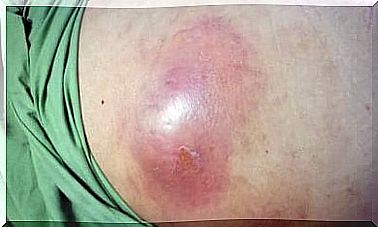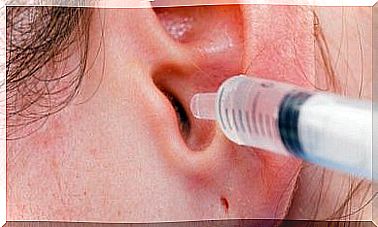Why Do Dark Circles Appear: The Different Causes

When dark circles appear, we automatically associate them with a sleepless night. While this is one of the most common causes of dark under-eye discoloration, the truth is, it’s not the only one.
Likewise, they are associated with a sick person. While it is true that those who are ill often show this mark on their face, even a healthy individual can have dark circles.
In any case, they are rarely related to serious health problems. So the question is… why do dark circles appear? There are several answers to this question.
What are dark circles?
Dark circles are the bluish, grayish, or purplish color that appears under the lower eyelids of the eyes. This is usually an isolated event, but some people often experience dark circles even in the absence of illness or sleepless night.
These signs also appear below the lower eyelid because the skin is very thin and sensitive at this point. It has a thickness of just half a millimeter, which is 5 times thinner than the skin of the rest of the face and 10 times thinner than the rest of the body.
Likewise, the lower eyelids contain less collagen, which is why they stretch more easily due to blinking. All this does makes the blood vessels more noticeable than other areas of the body.

The difference between bags and dark circles
Bags under the eyes and dark circles are two similar problems, but not the same. They are often confused because they affect the same area: the lower eyelid. However, they are of a different nature and due to different causes, although they sometimes arise simultaneously.
Dark circles, as we have already said, correspond to an increase in pigmentation in the area in question. A study published in the International Journal of Dermatology distinguishes three types of dark circles:
- Pigmented. They are due to an increase in melanin in the eyelids.
- Vascular. When the blood vessels in the area become transparent.
- Periorbital swelling or “valley of tears”. In this case, there is a marked furrow running from the inner corner of the eye to the cheek.
Bursae, on the other hand, are the result of inflammation or profusion in the lower eyelid. As such, they have no particular coloring and result from the loss of muscle tone of the eyelid, the accumulation of fluid or the herniation of the orbital fat of the eye.
Why do dark circles appear?
One of the reasons dark circles appear is genetics. In this case, the eyelid area is more pigmented and this trait is inherited. Some ethnic groups, in fact, are more inclined to present them.
– American Society of Dermatological Surgery –
Causes of dark circles:
- Fatigue. It is one of the most frequent causes. Fatigue causes blood vessels to dilate and the delicate skin of the eyelid shows this clearly (much more so if fatigue is accompanied by stress).
- Medicines. Some hypotensive eye drops (i.e., which lower intraocular pressure) make the pigmentation around the eye visible.
- Unbalanced diet. Excessive consumption of salt or foods containing caffeine, especially in the evening, causes water retention and affects the appearance of dark circles.
- Sunshine. The lower eyelids are sensitive to sun damage. Excessive exposure activates the production of melanin and with it dark circles appear.

Why dark circles appear: other causes
- Allergic reaction to a cosmetic. When the skin does not tolerate a certain cosmetic, it could trigger a reaction such as dark circles. This happens with products such as concealers or eyeliners.
- Allergies. Allergies cause an increased secretion of histamines and these, in turn, generate vascular dilation. Furthermore, dark circles also appear when the eyes are itchy and are rubbed vigorously and frequently.
- Water retention. Fluid retention is one of the causes of dark circles and bags under the eyes.
- Hormonal imbalances. Hormonal imbalances are not a direct cause of the appearance of dark circles, but they generate organic changes that affect the pigmentation of the eyelid, such as fluid retention.
- Aging. Over the years, the skin of the eyelid becomes thinner and more transparent.
- Other causes. Lack of iron, atopic dermatitis, eczema and decreased fat around the eyes also cause dark circles.
Accept dark circles
The reasons for dark circles are varied and can differ from person to person. However, they usually do not indicate serious health problems (except when they are caused by water retention or illness).
In general, strengthening cosmetic treatments can help reduce them. However, the expert José María Rumbo-Prieto suggests that the ideal would be to learn to accept them.
If you really can’t do it, alternatively, the definitive solution is to undergo a pigmentation treatment. In this case, it is worth going to a specialist to inquire in detail.









